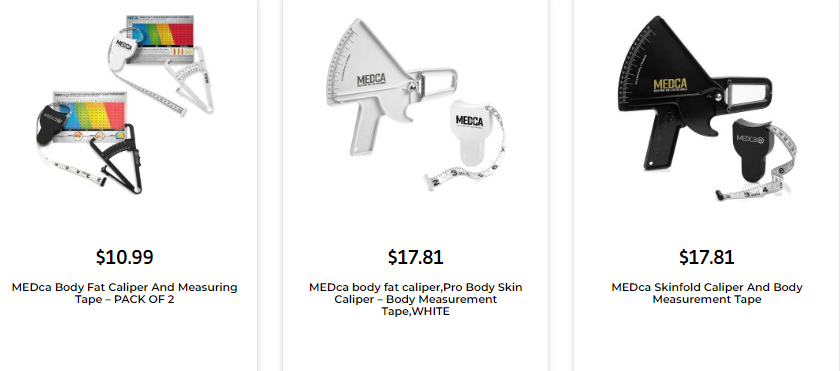In the ever-evolving field of medicine, innovation has led to significant advancements in surgical techniques and tools. One crucial aspect that often goes unnoticed but plays a pivotal role in the success of surgeries is ergonomics in surgical tool design. Surgeons across the USA are increasingly recognizing the importance of ergonomic design in their instruments, and for good reason. In this article, we will explore why ergonomics matter in surgical tool design and how it benefits both surgeons and patients.
Why Ergonomics in Surgical Tools?
1. Precision and Control:
Ergonomically designed surgical tools offer improved precision and control during procedures. These instruments are crafted to fit comfortably in the surgeon’s hand, reducing the risk of hand fatigue and allowing for steadier movements. As a result, surgeons can perform delicate maneuvers with greater accuracy, minimizing the chances of errors.
2. Reduced Fatigue:
Long surgical procedures require surgeons to maintain concentration and dexterity. Ergonomic designs reduce hand and wrist strain, which can lead to fatigue during lengthy surgeries. This increased comfort allows surgeons to perform optimally throughout the procedure, enhancing patient outcomes.
3. Enhanced Safety:
Ergonomics in surgical tool design also contribute to increased safety in the operating room. Instruments that fit well in the surgeon’s hand are less likely to slip or cause unintended movements. This can prevent accidental injuries to both the patient and the surgical team.
4. Improved Efficiency:
Efficiency is paramount in surgery, and ergonomics can greatly enhance it. Ergonomically designed tools enable surgeons to work more efficiently, reducing the time needed for procedures. This not only benefits the patient but also allows medical facilities to accommodate more cases.
Patient-Centered Benefits:
1. Quicker Recovery:
Surgical procedures using ergonomically designed tools often result in quicker patient recovery times. Reduced trauma to the body and improved surgical precision can lead to shorter hospital stays and a faster return to normalcy for patients.
2. Fewer Complications:
When surgeons use ergonomically designed tools, there is a lower likelihood of complications during and after surgery. The precision offered by these instruments minimizes tissue damage and reduces the risk of infection, resulting in a smoother recovery process.
3. Enhanced Patient Satisfaction:
Patients appreciate the care and consideration that surgeons put into their procedures. Ergonomically designed tools demonstrate a commitment to patient well-being, leading to higher patient satisfaction levels and positive word-of-mouth referrals.
The Role of Peak Surgicals:
When it comes to ergonomic surgical tool design in the USA, Peak Surgicals has been at the forefront. They understand the intricate needs of surgeons and patients, and their commitment to ergonomic excellence sets them apart. By collaborating with healthcare professionals, Peak Surgicals has consistently delivered instruments that optimize surgical outcomes while prioritizing the comfort and safety of both patients and surgeons.
In the realm of modern surgery, ergonomics in surgical tool design is more than just a buzzword; it is a crucial element that can make a significant difference in patient outcomes. Surgeons and medical facilities in the USA should prioritize the use of ergonomically designed instruments to improve precision, reduce fatigue, enhance safety, and ultimately provide better care to their patients. Peak Surgicals, with its unwavering dedication to ergonomic excellence, is leading the way in ensuring that surgical tools not only meet but exceed the highest standards in the field.
Investing in ergonomics is not just about instruments; it’s about the well-being of patients and the success of surgical procedures. By choosing ergonomic designs, surgeons are not only safeguarding their own health but also contributing to better healthcare experiences for patients across the USA.
Incorporate ergonomics into surgical tool design – choose Peak Surgicals for instruments that elevate surgical precision, safety, and patient satisfaction.
In the ever-evolving field of medicine, innovation has led to significant advancements in surgical techniques and tools. One crucial aspect that often goes unnoticed but plays a pivotal role in the success of surgeries is ergonomics in surgical tool design. Surgeons across the USA are increasingly recognizing the importance of ergonomic design in their instruments, and for good reason. In this article, we will explore why ergonomics matter in surgical tool design and how it benefits both surgeons and patients.
Why Ergonomics in Surgical Tools?
1. Precision and Control:
Ergonomically designed surgical tools offer improved precision and control during procedures. These instruments are crafted to fit comfortably in the surgeon’s hand, reducing the risk of hand fatigue and allowing for steadier movements. As a result, surgeons can perform delicate maneuvers with greater accuracy, minimizing the chances of errors.
2. Reduced Fatigue:
Long surgical procedures require surgeons to maintain concentration and dexterity. Ergonomic designs reduce hand and wrist strain, which can lead to fatigue during lengthy surgeries. This increased comfort allows surgeons to perform optimally throughout the procedure, enhancing patient outcomes.
3. Enhanced Safety:
Ergonomics in surgical tool design also contribute to increased safety in the operating room. Instruments that fit well in the surgeon’s hand are less likely to slip or cause unintended movements. This can prevent accidental injuries to both the patient and the surgical team.
4. Improved Efficiency:
Efficiency is paramount in surgery, and ergonomics can greatly enhance it. Ergonomically designed tools enable surgeons to work more efficiently, reducing the time needed for procedures. This not only benefits the patient but also allows medical facilities to accommodate more cases.
Patient-Centered Benefits:
1. Quicker Recovery:
Surgical procedures using ergonomically designed tools often result in quicker patient recovery times. Reduced trauma to the body and improved surgical precision can lead to shorter hospital stays and a faster return to normalcy for patients.
2. Fewer Complications:
When surgeons use ergonomically designed tools, there is a lower likelihood of complications during and after surgery. The precision offered by these instruments minimizes tissue damage and reduces the risk of infection, resulting in a smoother recovery process.
3. Enhanced Patient Satisfaction:
Patients appreciate the care and consideration that surgeons put into their procedures. Ergonomically designed tools demonstrate a commitment to patient well-being, leading to higher patient satisfaction levels and positive word-of-mouth referrals.
The Role of Peak Surgicals:
When it comes to ergonomic surgical tool design in the USA, Peak Surgicals has been at the forefront. They understand the intricate needs of surgeons and patients, and their commitment to ergonomic excellence sets them apart. By collaborating with healthcare professionals, Peak Surgicals has consistently delivered instruments that optimize surgical outcomes while prioritizing the comfort and safety of both patients and surgeons.
In the realm of modern surgery, ergonomics in surgical tool design is more than just a buzzword; it is a crucial element that can make a significant difference in patient outcomes. Surgeons and medical facilities in the USA should prioritize the use of ergonomically designed instruments to improve precision, reduce fatigue, enhance safety, and ultimately provide better care to their patients. Peak Surgicals, with its unwavering dedication to ergonomic excellence, is leading the way in ensuring that surgical tools not only meet but exceed the highest standards in the field.
Investing in ergonomics is not just about instruments; it’s about the well-being of patients and the success of surgical procedures. By choosing ergonomic designs, surgeons are not only safeguarding their own health but also contributing to better healthcare experiences for patients across the USA.
Incorporate ergonomics into surgical tool design – choose Peak Surgicals for instruments that elevate surgical precision, safety, and patient satisfaction.





